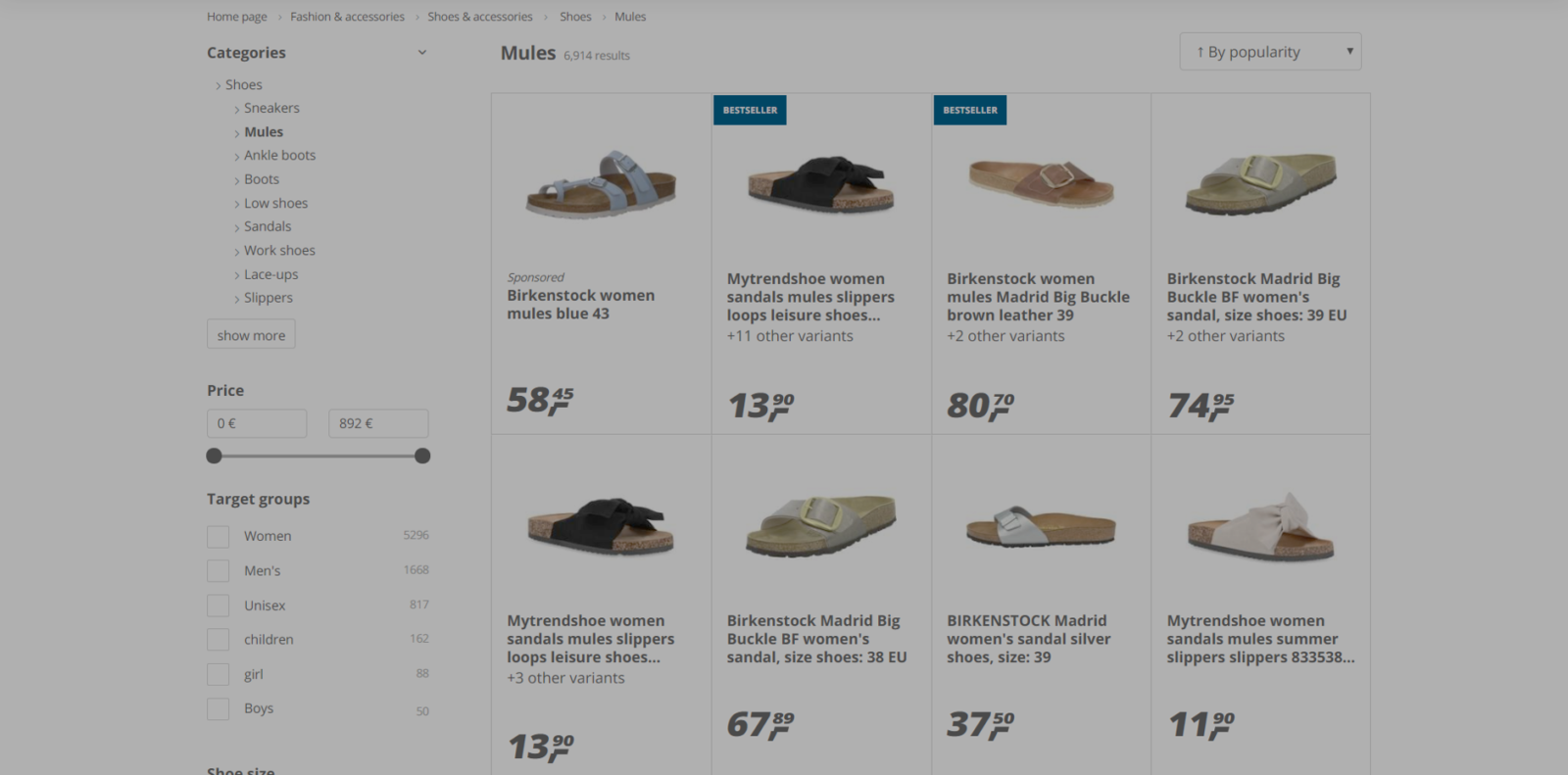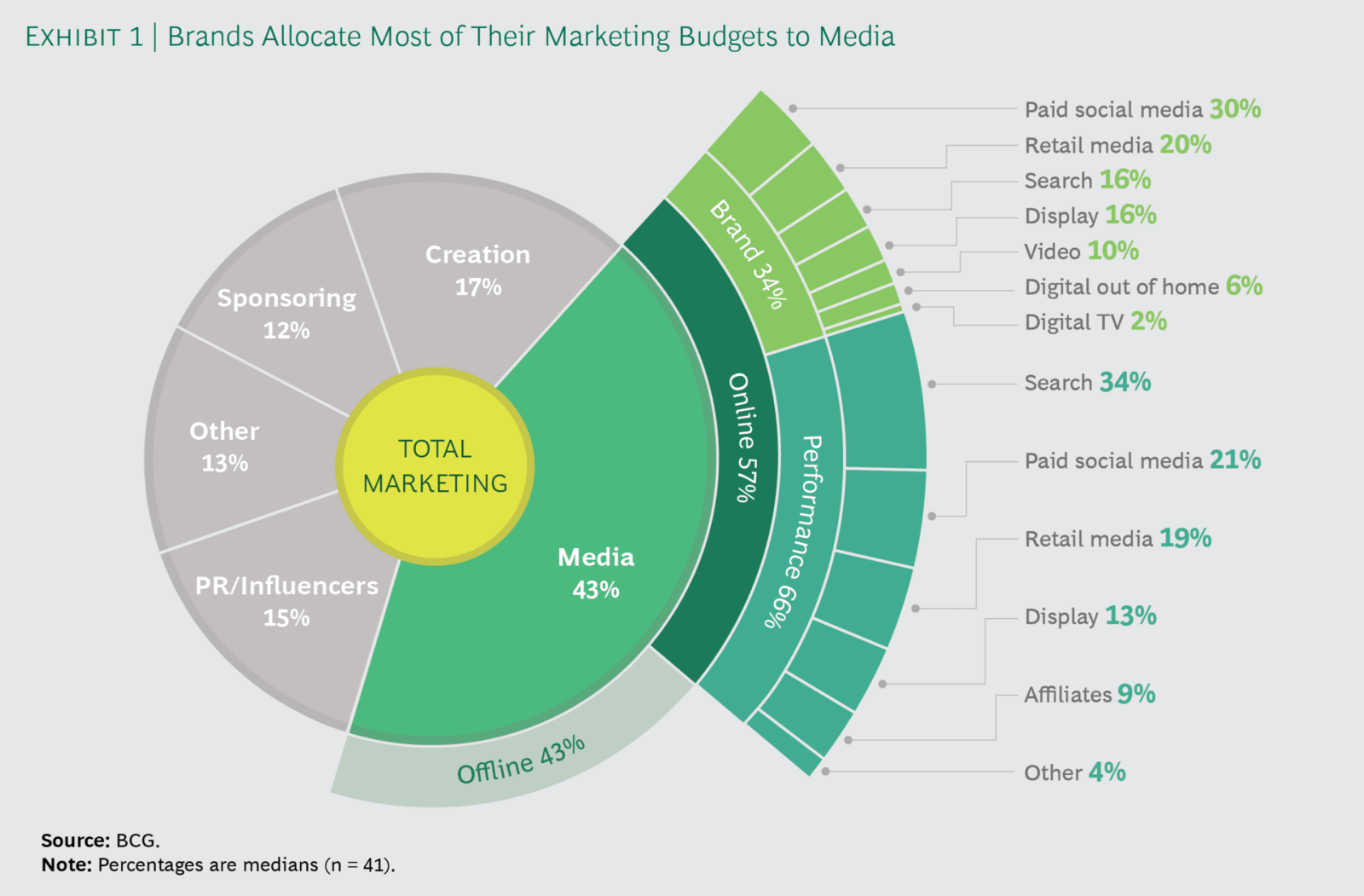Fashion and Sponsored Product Ads

Diane von Furstenberg, the Belgian fashion designer once said that style is something each of us already has, all we need is to find it.
In the age of online shopping sometimes finding it is easier with the help of Sponsored Product Ads.
In this post and with the help of Zalando, the European online retailer, we will share some insights on Sponsored Product Ads in Fashion sales.
The new collection
2 years ago, the CEO of Zalando, said that they don’t see Zalando Media Solution (ZMS) business as a major revenue driver and that “in terms of revenue growth contribution, it is only a small part and will also only be a very small part given the nature of the business“.
Back then in early 2018 eCommerce media was still relatively new to Europe, Amazon generated less than $5B a year from Sponsored Products (almost all of it came from the US market) and many European ecommerce players didn’t give ecommerce media much consideration.
Well, that is ancient history in fashion years.
Recently, a few months after introducing Sponsored Ads on Zalando and during the earning call for 2019 results it sounded quite different:
“The third priority has been our media business. Here, we offer our brands the opportunity to buy additional visibility and to acquire additional traffic on our platform. And we believe that this will be a very meaningful margin contributor for us in the long term.”
“Also here, we have seen extremely strong growth. Revenues of ZMS grew almost 120%. And the ZMS revenues now account for roughly 1% of our GMV. So we are well on track to our long-term ambition of about 3% to 4% of GMV.”
“We continue to target a margin in the range of 10% to 13%. The additional margin improvement is mainly driven by a growing partner program share and the resulting benefits from increasing high-margin commission and service revenues, especially advertising income from ZMS.
For growth, we expect to grow GMV by 20% to 25% and to add around EUR 1.6 billion to EUR 2 billion additional GMV, which would make it the biggest absolute growth we’ve ever achieved, driven by continued customer acquisition and the deepening of existing customer relationships.”
Because the ecommerce media business is very profitable (you don’t share the revenue with the anybody) the company expects that in 2020 “The gap between GMV and revenue will most likely be smaller than in 2019 due to a stronger adoption of our partner-facing platform services, Zalando Fulfillment Solutions and Zalando Marketing Services.”
There are 3 main issues that enable the success of Sponsored Product Ads in Fashion and were discussed in the earning call of Zalando:
(1) In eCommerce media Sponsored Product Ad is king
We all know that Sponsored Product Ads are responsible for 80% of Amazon ad revenue.
However, when you think about eCommerce fashion media the first question that comes to mind is this: Are you sure we are talking about Sponsored Product Ads? isn’t Fashion advertising all about branding and up the funnel marketing?
The main strength of eCommerce media is it’s amazing sales performance.
Being able to influence the consumers when they are already in the online store and ready to buy.
The best way to achieve it is by making sure your products are on the top shelf of the store. You can do that with Sponsored Product Ads.
It’s that simple.
Branding and other marketing goals are also reachable in the online store but there are other advertising channels that do it better.
Here is what Zalando is saying about it:
“The key growth driver for ZMS last year has primarily been our successful product listing ads.
Don’t forget, we also offer branding opportunities for brands. And I think long term, we also see a high potential in these types of formats, and we also see rising interest of brands in these types of formats, especially during times like the season start or where they want to present new collections or future specific product launches. If we look at our core product right now, though, so the product listing ads, we definitely see a significant uptick compared to the prior year. So I think if we compare where we were in terms of share of impressions a year ago and where we are now is more than doubled.”
In December 2018, the Boston Consulting Group together with Zalando, surveyed 90 leading global fashion brands from 40 fashion groups about their digital marketing.
They found that for both performance and branding, the three most important digital-marketing vehicles were paid social media, search, and retail media. Going forward, more than 95% of the brands that were surveyed planed to increase their online media spending significantly.
Today, knowing that Amazon for example is the number one destination for searching products in the US, it is clear that online retail media and online search are both achievable on eCommerce sites and so Sponsored Product Ads that can be found on search result pages and product pages in the eCommerce websites are in fact getting more than 50% of the performance budget.

(2) Shopper first
Zalando also offers some insights on how the fashion shoppers react to the Sponsored Product Ads.
It turns out that it is not different than any other ecommerce media vertical (check out our posts on Etsy and Amazon for example) – If you do it properly and you serve relevant ads the shopper might even like it.
“We do not only see interest from brands, but we also see – see this influencing and also going well with the consumer experience. And this is obviously key for us because on the one hand, you could think about, obviously, leveraging that even more and scaling it even faster. But at the same time, we are very mindful that in the end, the most important thing is relevancy for customers. And that’s why we think it’s great that we can show that we can do both hand-in-hand, have great engagement on the customer side, and at the same time, grow our advertising business.”
This should not come as a surprise.
During the shopping season last year, we also saw that the number of ads, the CTR’s the conversion rate for products in fashion categories increased dramatically. Sneakers for examples had X2 more ads served, dresses had X2 higher CTR and accessories like handbags reached X3 higher conversion rates. Here are some more examples.
Same thing happened in 2018. The fashion category got the highest conversion rates and more than doubled it.
(3) Self-service and easy to manage platform is key!
Like many other online eCommerce retailers that introduced a marketplace or a platform enabling many sellers and brands, small and big, to sell, Zalando understands the importance of a scalable self-service intuitive console.
“The fourth initiative I would like to mention is really to build the next-generation of our tooling. So in the platform world, obviously, the tooling we offer our brand partners is key, and we want to make sure our platform is more accessible by making it easier to onboard and integrate, that the platform is more understandable by offering the analytics tools that allow the brands to really understand the drivers of the trading outcome. And then also to make it actionable by making it easier for them to influence the outcome, for example, through ZMS. And we would like to integrate all of this into one integrated tooling suite that makes it even easier for partners to be successful on our platform because on our platform, the brand success also will be our success.”
This topic was also mentioned in eBay’s Q1 earning call 2 weeks ago (read here: How to the stream of long tail ad revenue),
Read Zalando Q4 2019 Results Earnings Call Transcript in Seekingalpha.
About Mabaya
Mabaya’s Sponsored Product Ads platform is a white label solution for marketplaces and online retailers who want to run their own ecommerce media and enable their sellers and brand partners to promote their products within the store. The company has vast experience in the ecommerce media space, serving billions of Sponsored Product Ads for major ecommerce sites.

